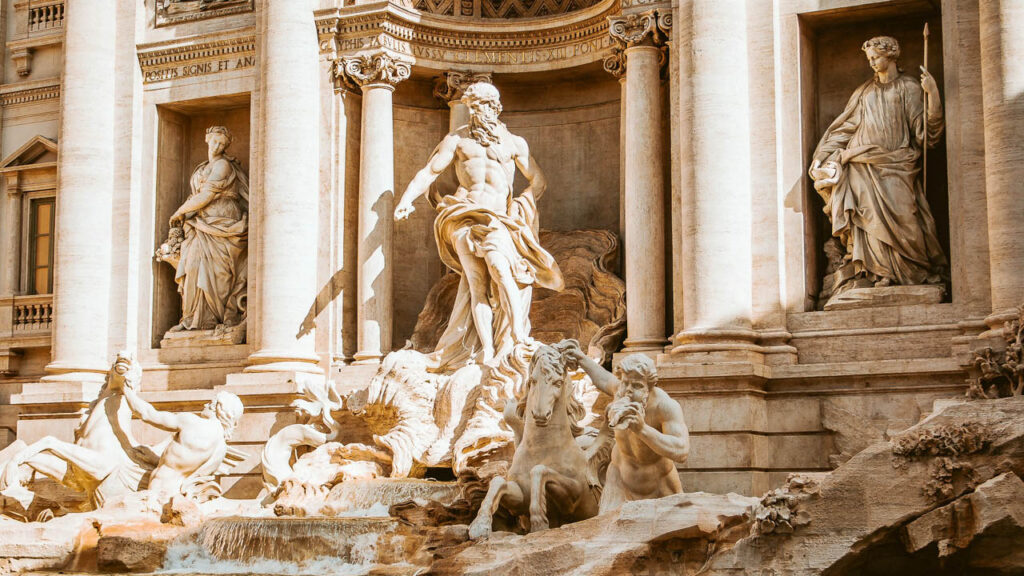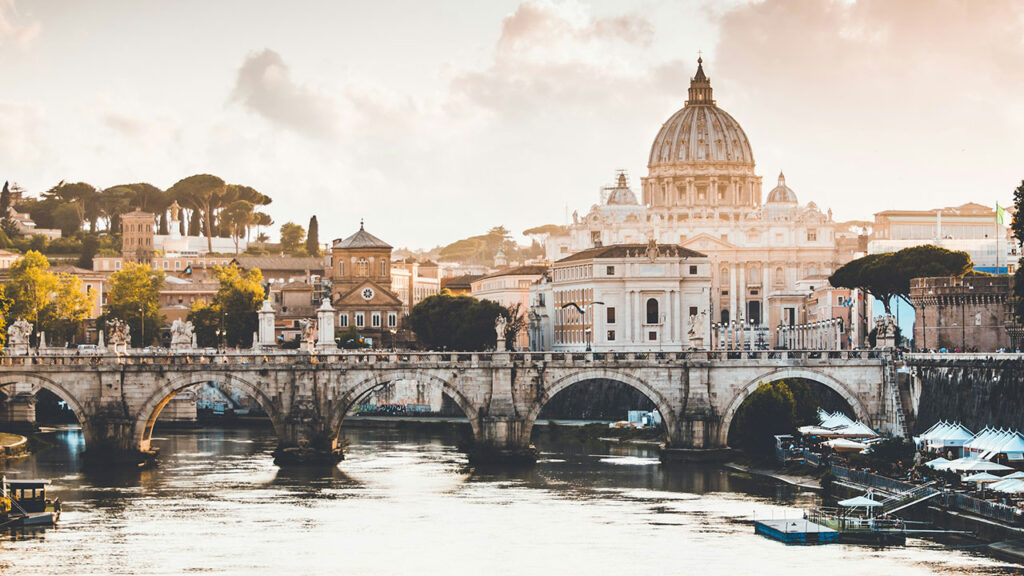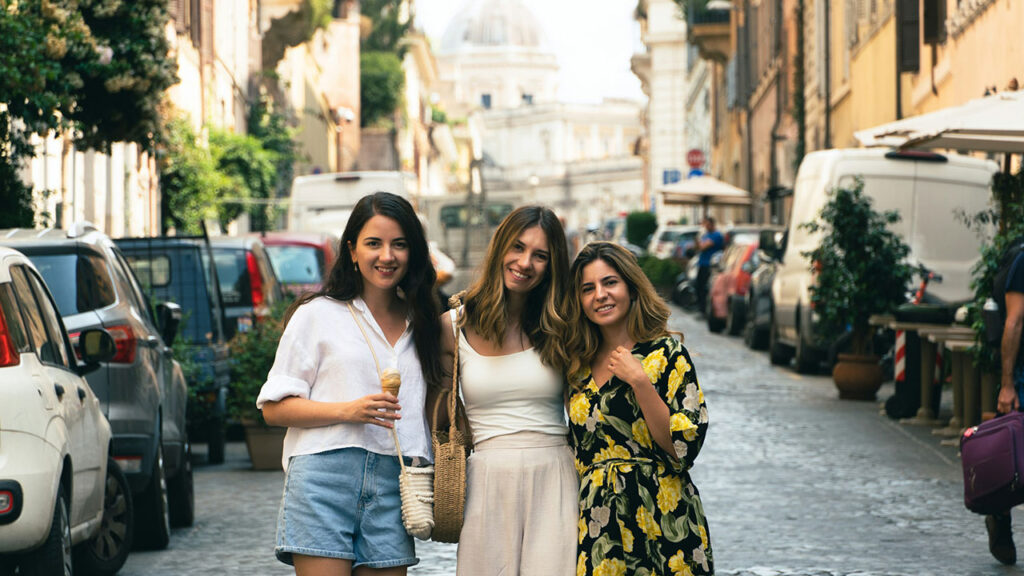Rome, the Eternal City, is a destination that sits at the top of many travelers’ bucket lists, and for good reason. A city where ancient history meets vibrant modernity, Rome offers a rich tapestry of experiences. Whether you’re a first-time visitor or a seasoned traveler, this guide will provide you with everything you need to make the most of your trip to Rome in 2024.
1. When to Visit Rome
Rome is a city that can be visited year-round, but each season offers a different experience.
Spring (March to May)
Spring is one of the best times to visit Rome. The weather is mild, flowers are in bloom, and the city is alive with events and festivals. Expect temperatures between 15°C to 22°C (59°F to 72°F). This is also a great time to explore Rome’s parks and gardens, such as Villa Borghese and the Orange Garden.
Summer (June to August)
Summer in Rome is hot, with temperatures often exceeding 30°C (86°F). While the city is bustling with tourists, many locals head to the coast, so you might find some areas less crowded. Be prepared for long queues at major attractions. If you visit during summer, take advantage of early mornings and late evenings to explore the city.
Autumn (September to November)
Autumn is another ideal time to visit Rome. The weather cools down, and the tourist crowds start to thin out. Temperatures range from 12°C to 25°C (54°F to 77°F). The fall foliage adds a beautiful backdrop to the city’s historic sites, and it’s also harvest season, so you can enjoy fresh produce and wine.
Winter (December to February)
Winter in Rome is mild compared to other European cities, with temperatures ranging from 3°C to 13°C (37°F to 55°F). This is the best time to experience Rome without the crowds. Christmas is a magical time in the city, with festive lights, markets, and the famous Christmas tree at Piazza Venezia.
2. How to Get to Rome
By Air
Rome is served by two major airports: Fiumicino (Leonardo da Vinci) and Ciampino. Fiumicino is the main international airport and is well-connected to the city center by train, bus, and taxi. Ciampino is smaller and mostly handles low-cost airlines. From Ciampino, you can take a bus or taxi to reach the city.
By Train
Rome’s central train station, Roma Termini, is a hub for both domestic and international trains. It’s well-connected to other major Italian cities like Florence, Venice, and Milan, as well as other European destinations.
By Car
Driving in Rome is not recommended for first-time visitors due to traffic and limited parking. However, if you plan to explore the countryside or nearby regions, renting a car can be convenient. Just be aware of Rome’s ZTL (Limited Traffic Zone) areas, where non-residents are not allowed to drive.
By Bus
If you’re arriving from another European city, several long-distance bus companies, like FlixBus, connect Rome with other major cities. Buses usually arrive at Tiburtina Station, which is well-connected to the metro and bus networks.
3. Getting Around Rome
Rome’s public transportation system is extensive and includes buses, trams, and a metro system.
Metro
Rome has three metro lines (A, B, and C), which connect key parts of the city. The metro is fast and efficient, but it doesn’t reach all areas, especially the historic center. The operating hours are generally from 5:30 AM to 11:30 PM, with extended hours on weekends.
Bus and Tram
Buses and trams are a great way to get around, especially to areas not served by the metro. The bus system is extensive but can be affected by traffic, so plan accordingly. Tickets are available at metro stations, newsstands, or via mobile apps, and must be validated once you board.
Taxis and Ride-Sharing
Taxis are widely available, but can be expensive. Make sure to use official white taxis with a meter. Ride-sharing services like Uber also operate in Rome, though they are typically more expensive than taxis.
Walking
Walking is often the best way to explore Rome, especially the historic center. The city is compact, and many attractions are within walking distance of each other. Wear comfortable shoes, as Rome’s cobblestone streets can be tough on your feet.
Biking
Rome has a growing network of bike lanes and shared bike services like Lime and Jump by Uber. Biking can be a fun way to explore, but be cautious of traffic and narrow streets.
4. Must-See Attractions in Rome
The Colosseum
No trip to Rome is complete without a visit to the Colosseum, the iconic symbol of the city. Built in 80 AD, this ancient amphitheater once hosted gladiator battles and public spectacles. Book your tickets in advance to skip the long lines, and consider a guided tour to fully appreciate its history.
The Roman Forum and Palatine Hill
Adjacent to the Colosseum, the Roman Forum was the center of political and social life in ancient Rome. Wander through the ruins of temples, basilicas, and public spaces, and then climb Palatine Hill for panoramic views of the city.
The Pantheon
The Pantheon is one of Rome’s best-preserved ancient monuments. Originally built as a temple to all gods, it’s now a functioning church. The building’s massive dome and oculus are architectural marvels that continue to inspire awe.
Vatican City
Vatican City is a must-visit for anyone traveling to Rome. Home to the Pope and the heart of the Catholic Church, the Vatican is also home to incredible art and history. Don’t miss St. Peter’s Basilica, the Vatican Museums, and the Sistine Chapel, where you can see Michelangelo’s famous ceiling.
Trevi Fountain
Throw a coin into the Trevi Fountain to ensure your return to Rome. This Baroque masterpiece is one of the city’s most famous landmarks, and it’s particularly beautiful at night when it’s illuminated.
Spanish Steps
The Spanish Steps are a great place to relax and people-watch. Climb the 135 steps to reach the Trinità dei Monti church, or simply enjoy the view from the base at Piazza di Spagna.
Piazza Navona
Piazza Navona is one of Rome’s most beautiful squares, known for its stunning fountains and vibrant atmosphere. The square is home to the famous Fontana dei Quattro Fiumi by Bernini, as well as a variety of cafes, restaurants, and street performers.
Castel Sant’Angelo
Originally built as a mausoleum for Emperor Hadrian, Castel Sant’Angelo has served as a fortress, papal residence, and now a museum. The rooftop terrace offers spectacular views of the city and the Tiber River.
5. Rome’s Best Neighborhoods to Explore
Trastevere
Trastevere is a picturesque neighborhood known for its narrow, cobbled streets, ivy-covered buildings, and lively atmosphere. It’s a great area to explore during the day, with plenty of cafes, boutiques, and historic churches like Santa Maria in Trastevere. At night, the neighborhood comes alive with bars and restaurants.
Monti
Monti is one of Rome’s trendiest neighborhoods, located just a short walk from the Colosseum. It’s a mix of old and new, with ancient ruins sitting alongside hip cafes, vintage shops, and artisan boutiques. Monti is a great place to experience Rome’s creative side.
Campo de’ Fiori
Campo de’ Fiori is famous for its vibrant market, which operates daily in the square. It’s a lively area with plenty of cafes, restaurants, and bars. In the evening, the square becomes a popular spot for both locals and tourists to gather.
Testaccio
Testaccio is known for its authentic Roman character and is a great neighborhood to explore if you want to experience local life. It’s also home to some of the city’s best food markets, like Mercato Testaccio, and has a thriving nightlife scene.
Prati
Prati is located near Vatican City and is known for its elegant streets, high-end shopping, and beautiful architecture. It’s a more residential area, making it quieter than other parts of Rome, but still offers plenty of dining and shopping options.
6. Dining in Rome
Traditional Roman Cuisine
Rome is a food lover’s paradise, with a cuisine that’s both simple and delicious. Don’t miss trying classic dishes like Cacio e Pepe (pasta with pecorino cheese and black pepper), Carbonara (pasta with eggs, cheese, pancetta, and pepper), and Supplì (fried rice balls).
Where to Eat
- For Traditional Roman Cuisine: Try Da Enzo al 29 in Trastevere for an authentic Roman meal. Another great option is Roscioli, located near Campo de’ Fiori, known for its high-quality ingredients and wine selection.
- For Pizza: Head to Pizzarium near the Vatican for some of the best pizza al taglio (pizza by the slice) in the city.
- For Gelato: Giolitti near the Pantheon is one of Rome’s oldest and most famous gelaterias. Another must-visit is Gelateria del Teatro near Piazza Navona, known for its artisanal flavors and fresh ingredients.
Dining Tips
- Reservations: It’s a good idea to make reservations, especially at popular restaurants, as they can fill up quickly.
- Tipping: Tipping is not mandatory in Italy, but it’s appreciated. If service is exceptional, leaving a small tip (around 5-10%) is customary.
- Aperitivo: Don’t miss the Italian tradition of aperitivo—a pre-dinner drink accompanied by small bites. Many bars offer aperitivo between 6:00 PM and 8:00 PM, and it’s a great way to relax before dinner.
7. Shopping in Rome
Rome offers a variety of shopping experiences, from high-end fashion to local markets.
Luxury Shopping
Rome is a fashion capital, and you’ll find plenty of high-end shopping around Via Condotti, Via del Corso, and Piazza di Spagna. These areas are home to flagship stores of major Italian and international luxury brands, such as Gucci, Prada, and Valentino.
Local Markets
For a more authentic shopping experience, visit one of Rome’s many markets. Campo de’ Fiori market is great for fresh produce, spices, and flowers. Porta Portese in Trastevere is a large flea market held on Sundays, where you can find everything from vintage clothing to antiques.
Artisan Shops
Rome is also known for its artisan shops, where you can find handcrafted leather goods, jewelry, and ceramics. Monti is a great neighborhood to explore if you’re looking for unique, locally made products.
8. Essential Travel Tips
Language
While many Romans speak English, especially in tourist areas, learning a few basic Italian phrases can go a long way. Simple greetings and polite expressions are always appreciated.
Currency
Italy uses the Euro (€). Credit cards are widely accepted, but it’s always good to have some cash on hand, especially for smaller purchases or at markets.
Safety
Rome is generally safe, but like any major city, it’s important to stay aware of your surroundings. Be cautious of pickpockets, especially in crowded areas like public transport and tourist attractions. Keep your belongings secure and avoid carrying large amounts of cash.
Dress Code
When visiting religious sites like the Vatican or churches, dress modestly—cover your shoulders and knees. This is a sign of respect and is often enforced by staff.
Hydration
Rome has many public drinking fountains, known as nasoni, where you can fill up your water bottle with fresh, clean water. It’s a great way to stay hydrated while exploring the city.
Public Restrooms
Public restrooms can be scarce in Rome, so take advantage of facilities in cafes and restaurants when you can. Be prepared to pay a small fee to use some restrooms.
9. Off-the-Beaten-Path Attractions
Appian Way (Via Appia Antica)
One of the oldest roads in Rome, the Appian Way is a beautiful, historic route lined with ancient tombs, ruins, and countryside. It’s perfect for a leisurely walk or bike ride away from the city’s hustle and bustle.
Giardino degli Aranci (Orange Garden)
For one of the best panoramic views of Rome, visit the Orange Garden on Aventine Hill. This peaceful park is a hidden gem, offering stunning views of the city, including St. Peter’s Basilica.
Quartiere Coppedè
This lesser-known neighborhood is a surreal mix of Art Nouveau and fantasy architecture. It’s a great spot for photography and offers a quiet escape from the busy city center.
Jewish Ghetto
Explore the Jewish Ghetto, one of Rome’s oldest neighborhoods, known for its rich history and culinary delights. Don’t miss trying carciofi alla giudia (Jewish-style fried artichokes) at one of the local restaurants.
10. Day Trips from Rome
Tivoli
Just a short train ride from Rome, Tivoli is home to two UNESCO World Heritage Sites: Villa d’Este, known for its Renaissance gardens and fountains, and Hadrian’s Villa, the sprawling estate of Emperor Hadrian.
Ostia Antica
Ostia Antica is an ancient Roman harbor city that’s often compared to Pompeii, but without the crowds. Explore the well-preserved ruins, including a theater, baths, and mosaics.
Castelli Romani
The Castelli Romani is a group of charming hill towns southeast of Rome, known for their beautiful scenery, wine, and historic villas. Frascati is a popular destination for its white wine and local cuisine.
Conclusion
Rome is a city that captivates the heart and soul, offering a mix of history, culture, and modern life. Whether you’re wandering through ancient ruins, indulging in delicious food, or simply soaking up the atmosphere, Rome has something for everyone. With this guide, you’ll be well-prepared to explore the best that Rome has to offer in 2024. Buon viaggio!


